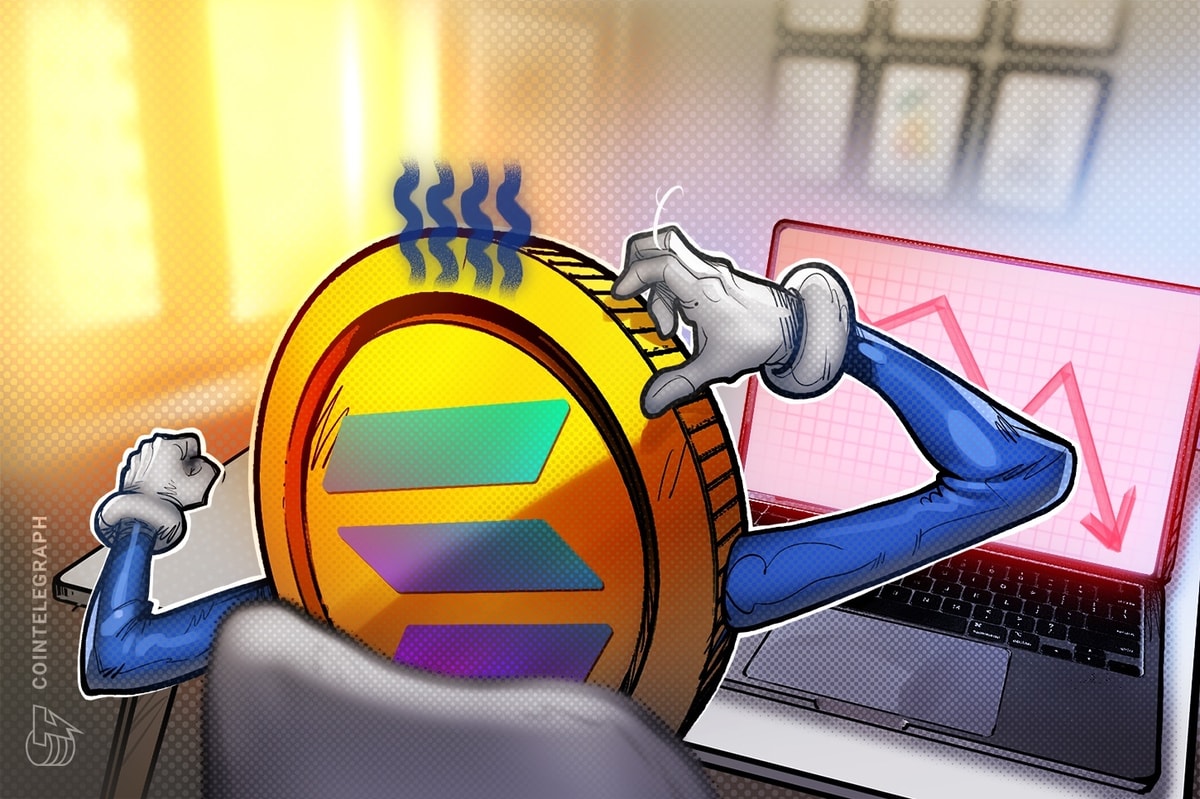Solana price falls below $200 as the network’s onchain activity drops, but investors’ anticipation of a spot SOL ETF could prompt a recovery.
Market Analysis
Solana’s native token, SOL (SOL), last closed above $220 on Feb. 1 and is currently trading 32% below its all-time high of $295 from Jan. 19. Traders’ sentiment has worsened, according to SOL derivatives metrics, while the latest decline in Solana network activity could further dampen the odds of reclaiming bullish momentum.
Solana weekly onchain volumes, USD. Source: DefiLlama
Onchain transaction volumes for Solana declined by 28% in the seven days ending Feb. 10, totaling $31.8 billion, according to DefiLlama data. The slowdown in decentralized exchange (DEX) activity likely signals the end of the recent memecoin frenzy, which peaked with the Official Trump (TRUMP) token launch on Jan. 19.
Memecoin trading slump and declining fees weigh on SOL price
The drop in trading interest has also weighed on token prices, creating a negative feedback loop for SOL as lower fees reduce incentives for staking. In the memecoin sector, Dogwifhat (WIF) is down 60% over 30 days, Goatseus Maximus (GOAT) corrected 67%, MooDeng (MOODENG) lost 69%, Peanut the Squirrel (PNUT) dropped 72%, and Just a Chill Guy (CHILLGUY) declined 75%. For comparison, Bitcoin (BTC) gained 2% over the same period.
Among Solana’s decentralized applications, notable declines include a 47% drop in trading volumes on Orca and Phoenix and a 27% decrease in Raydium activity over the seven days ending Feb. 10. However, it would be inaccurate to single out Solana as similar trends were observed across other blockchains.
Blockchains ranked by 7-day onchain volumes, USD. Source: DefiLlama
The 28% drop in Solana’s onchain volumes aligns closely with declines in competing networks, including BNB Chain, Ethereum, Sui, and Polygon. This suggests that the correction in memecoin prices and reduced DEX activity were not exclusive to Solana.
To assess whether SOL traders have turned more bearish, the perpetual futures funding rate serves as a key indicator, reflecting leverage demand imbalances. Typically, long positions (buyers) pay funding fees for leverage, and a negative rate signals a more pessimistic market outlook for SOL.
SOL futures 8-hour funding rate. Source: CoinGlass
Data shows that SOL’s funding rate has remained mostly negative since Feb. 2, following its price drop below $220. This indicates weak demand from leveraged buyers. However, this is not necessarily a bearish signal for SOL, as investors appear to be reacting to lower network activity and fees rather than betting against the token or anticipating a major negative event.
Solana’s total value locked (TVL) remains steady at 46.5 million SOL, unchanged from the previous month. In comparison, Ethereum’s TVL grew 9% in ETH (ETH) terms over the past 30 days, while BNB Chain saw a 4% decline in BNB-denominated (BNB) deposits. This suggests Solana is holding its ground relative to its competitors.
Source: ASvanevik
Alex Svanevik, CEO of blockchain analytics firm Nansen, noted that Solana has surpassed Ethereum in several key metrics, including active addresses, transactions, volumes, and fees. He pointed out that TVL remains the only area where Solana lags, though the gap has narrowed significantly over the past year.
Related: What is a Phantom wallet? How to set up and use it
Despite new entrants like Aptos and Sui, Solana has consolidated its position as the second-largest blockchain ecosystem. Additionally, investors speculate that SOL could attract further institutional inflows if the US Securities and Exchange Commission approves a Solana spot exchange-traded fund (ETF). Reportedly, Bloomberg analysts currently assign a 70% probability of approval in 2025.
Given Solana’s onchain metrics resilience relative to its peers, there is no strong reason to expect SOL’s price to decline solely due to lower network activity or the current lack of leveraged buying interest.
This article is for general information purposes and is not intended to be and should not be taken as legal or investment advice. The views, thoughts, and opinions expressed here are the author’s alone and do not necessarily reflect or represent the views and opinions of Cointelegraph.
This article first appeared at Cointelegraph.com News


